May 24th, 2015
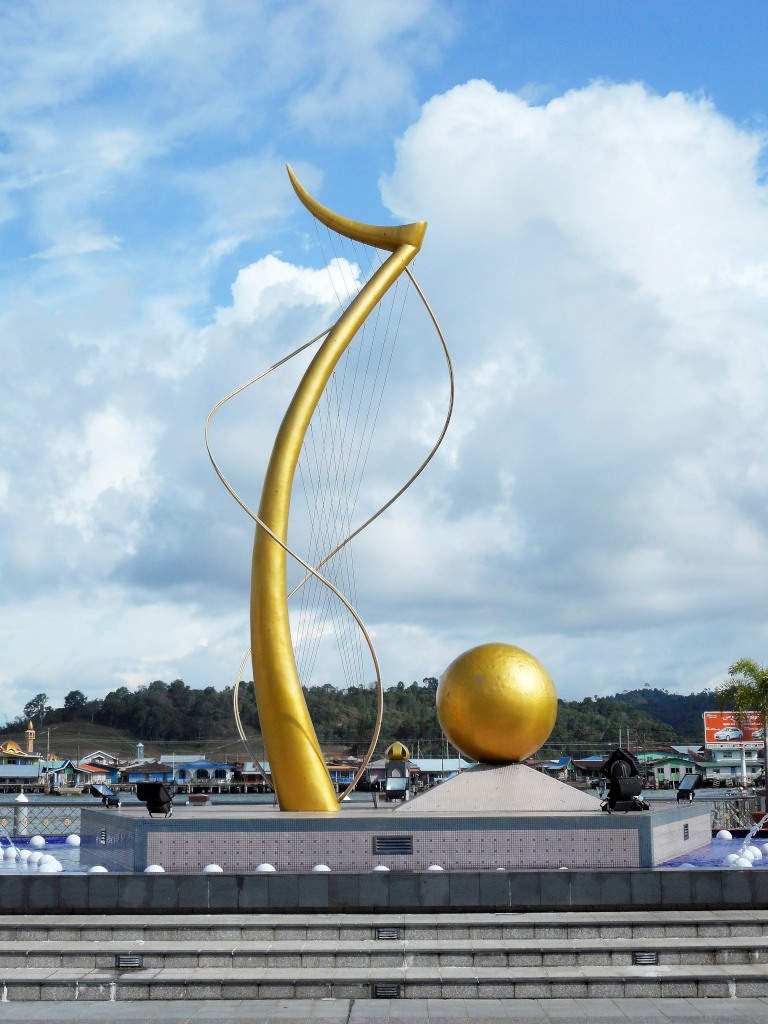
The usual late day, out of the hotel by the mid-afternoon, my latest plague the ongoing issue with the after-effect of the leech bite, the arm on which the bite occurred still very itchy, never mind the fact that I can’t seem to book a return flight to Bangkok. The wifi connection in my room is atrocious, but it seems the problem is with the backend. And yet the young woman working at the reception assures me that her cable connection works admirably well.

Breakfast is more upscale this morning, Waitrose tropical granola with quinoa and chia milk, hardly very Southeast Asian, but then so what – you need a break sometimes.

A young boy seems to be deriving entertainment by hanging out in the kitchen while I eat, but his supply of English and mine of Malay run out very quickly, despite the best of intentions. His even younger friend comes around with a kitten wrapped in a towel. I like cats, am less of a dog person, and the Moslem peoples tend to avoid dogs as they are considered haram.

The river taxi pilot has no patience for my attempts to take photos of the surrounding countryside with my cheap point and shoot camera as he races towards Yayasan Centre, the streets of town even more abandoned-seeming than usual, if that is even possible in Bandar Seri Begawan.
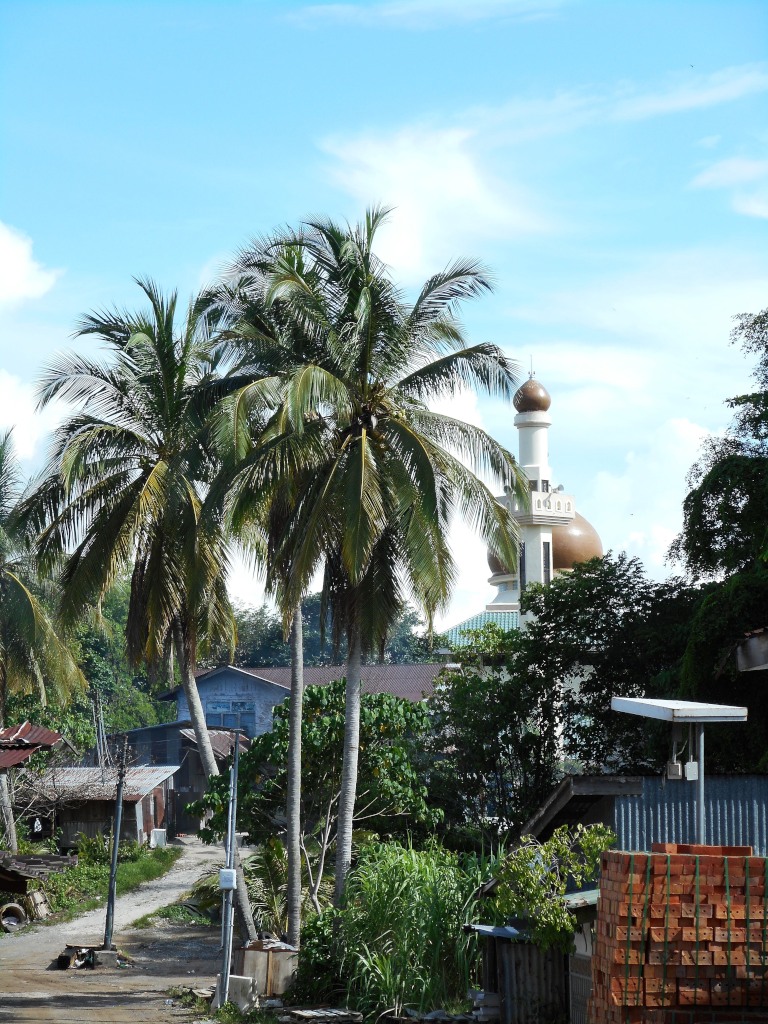
A long-canopied boat loaded with some 40 passengers clad in the identical brilliant orange life jackets slides out onto the water as the river taxi I am in floats up to the steps. The two young women seated in the shade of the upper terrace have no idea how a passage on such a river cruise could be arranged, nor does the staff inside the modest photo gallery on one side of the plaza, not that I had noticed it before.
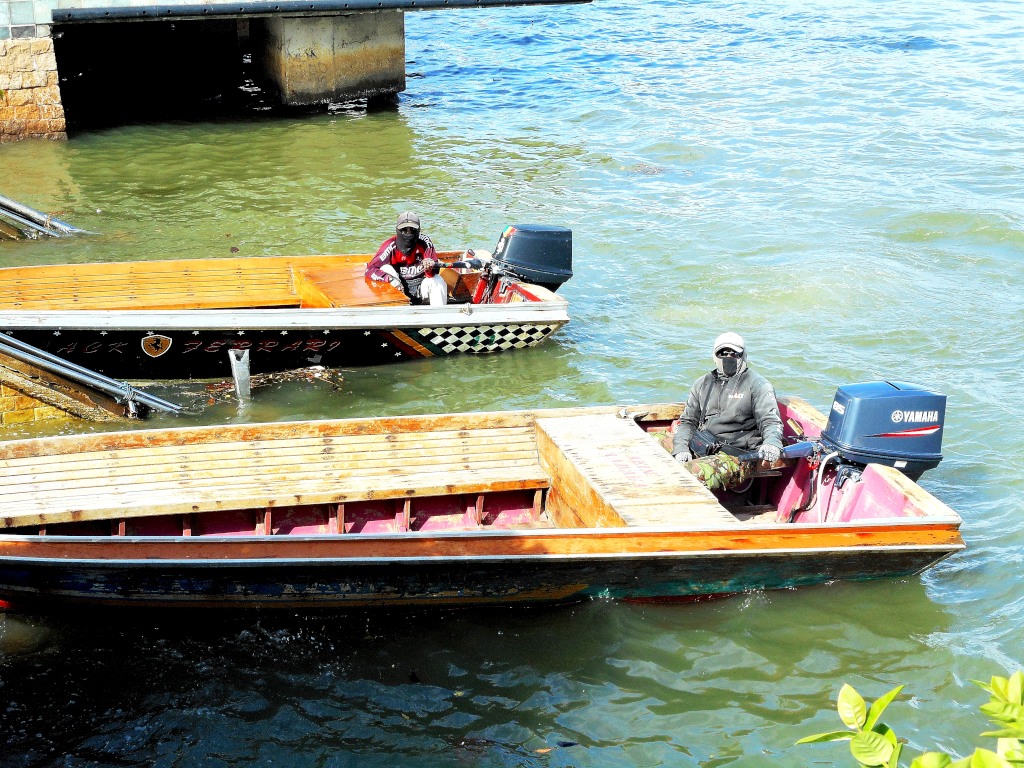
I should consider taking an excursion through Kampung Ayer, but given I have unwittingly flown by or through it each time I leave from or return to Kota Batu, it may not be high on the priority list.

I wander along the open spaces facing the waterfront, mesmerizing cloud formations rising above the green on the opposing river banks. The wide Brunei river is almost bereft of traffic, the modest commercial buildings lining the street empty of any sign of life, and certainly no tourism office in view.

I would love to find out more about the possibility of taking a river cruise, but more importantly, how to get to Ulu Temburong national park on the upper end of Brunei without spending umpteen hundreds of dollars for the pleasure, as per the information I have seen of various local tour agencies online.

Through the single open door in one of the buildings, I enter a small gallery of local photography, where the security guard and desk staff come to the conclusion that there is in fact no tourism office downtown. I could go to the airport, but that would seem utterly ridiculous.

Bandar Seri Begawan is a bit of an anomaly, barely even an administrative centre in Brunei, the general region of the city absorbing a lot of the businesses and services that would normally be concentrated in the city.

Apparently, there is some sort of tour guide who hangs around the water front, and before I can convince the well-meaning staff otherwise, they flag the man down, who proceeds to list all the services he could offer me in the area.
No, no, and no – I am only interested in doing things on my own, and I want to find out how to reach these places – on my own! I don’t need his help otherwise. Alone the information on how to get to the royal palace is sham, as there are numerous buses passing by from the adjacent bus terminal.

At the cafe adjacent Gloria’s, the coffee is somewhat cheaper but very good indeed. Less inspiring is the tale of woe of the young Filipina worker, whose otherwise bright demeanour is coloured by the admission that the wages of guest workers only amount to BR $12 a day, which may seem reasonable for people coming from the most impoverished countries in Asia, but for this country there is no way anyone can survive on so little.

She sells me a coffee for almost $4, the bus costs $1, the river taxis $2 for short distances, and the taxis we don’t even want to think about. I give my usual meaningless commentary, involving recommending returning to the Philippines, picking up some professional education, then jumping ship to Canada or the U.S., but it just sounds so easy saying it.

A young dreadlocked French Canadian woman is hunched over her netbook, trolling Facebook, trying to find out what the attractions of Brunei may be. She had just been in the Miri area and climbed the Pinnacles in Gunung Mulu National Park. She tells me the trail was very treacherous, very steep, slippery and higher portions largely rock, where one wrong move on the steep and slippery surface would have launched her far below onto the sharp rocks.

Chatting with her is an older Frenchman on his umpteenth trip in Asia, who listens to my laments about traveling in the region contemplatively, acknowledging that even Myanmar may not be what it used to be. The world changes around us and we have to continue seeing the world on its own terms. He is a more dedicated photographer, carrying around the last release of Nikon’s full frame F100 film camera, probably an amazing gem, although he is also now experiencing technical difficulties with his camera.

He shows me digital scans of his pictures, and despite their naturally inferior quality, you can easily see the difference in tone and light from the perennially flatter and more insipid digital pictures. The crux of our conversation is arranging a trip to Ulu Temburong National Park, which he emphasizes is just a waste of time, as you can only take the boat in to a small portion of the park, the large region of the park largely inaccessible to visitors. So save your money and go elsewhere …
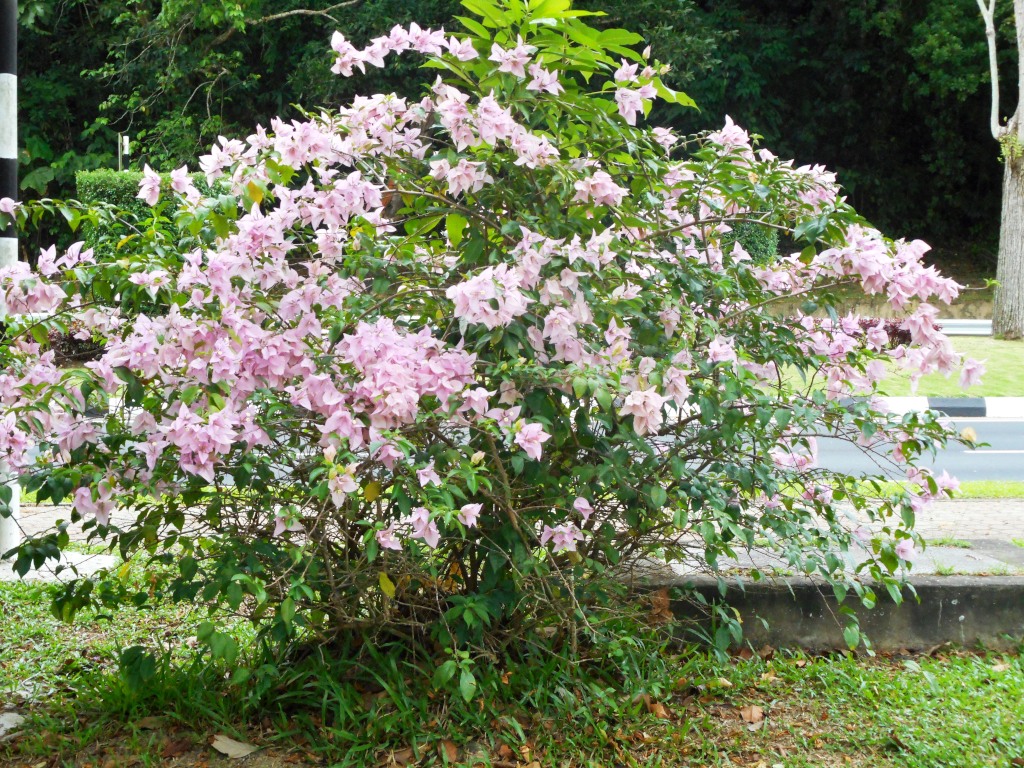
There are many buses heading in the direction of the royal palace, although the 45 takes some time before departing, the crowds of young men much more feral and hungry-looking than the typical well-off Malays you see here and in Malaysia. Their dark, etched faces chatter intently but playfully, rural Indonesia present in full force.

Eventually we leave the terminal and the confines of the regal mosques and staid government buildings of the small centre, continuing along the impeccably paved boulevards lined with park lands and modern housing complexes, the road curving broadly under the turgid skies, threatening to continue the downpours of the morning.
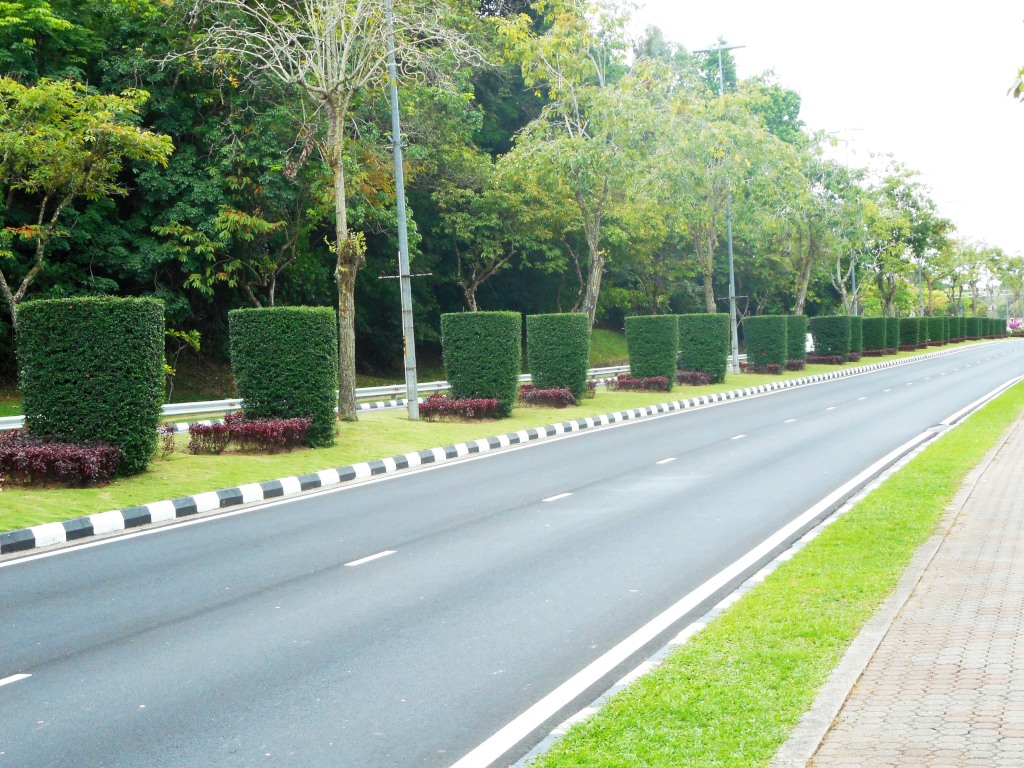
And there is it is, the long wrought iron fence emblazoned with regularly spaced gold medallions presumably representing the sultan’s royal house, finials artfully cresting the evenly spaced black metal staves, then the gates, but the bus just keeps on going.

At first I wait for the driver to stop, then at the next stop he continues. I tap him on the shoulder, whereupon he belatedly pulls over, as he had obviously forgotten to drop me off at the entrance of the royal palace. And now I have to walk even further along the artfully decorated riverfront park to find an entrance, as the park that I had wanted to visit is separated from the street with a fence similar but not as ostentatious as the one encircling the royal palace.

Scattered numbers of runners occupy the trails that run along both sides of the sheltered narrow band of green bordered on one side by a tributary of the Brunei river and the wall of forest on the far side, and the boulevard I had just disembarked on. Large modern sculptures herald good feelings about the regime, ASEAN, and life in general, a rare foray into western cultural sophistication in a Southeast Asian country.

Taman Arca is an exemplar of Brunei – pretty, well-maintained, peaceful, attractive but not stunning. And yet in sum total a lot better place to be than the dirt, chaos and poverty of the rest of the region. Certainly the indigenous Malays from Brunei who live and work in good jobs are doing very well for themselves.
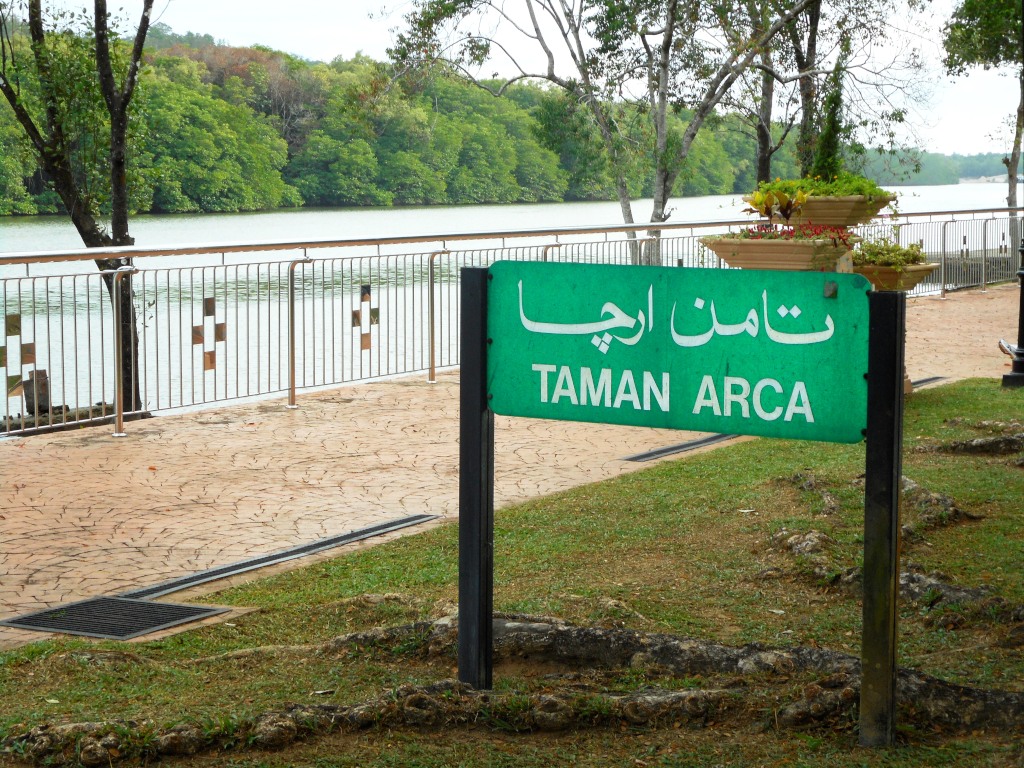
But to claim that the Sultan of Brunei lives in a different world is a severe understatement, as he is not just one of the richest men in the world, but probably has one of the most extravagant spending habits ever seen. And yet from outside the palace – entry to the palace grounds is not permitted for mere mortals – the buildings seen in the distance don’t seem particularly impressive or large, the impression being more one of a staid, well-imbued comfort.

The true splendours of the palace are probably visible only to visitors, such as those in the relatively modest motorcade approaching the palace, including a few motorcycle police with flashing lights, a series of late model BMWs, ending with a number of vans.

Interestingly enough, the shoes that plagued my feet so much when I started this trip now seem to be holding up in the last week since my sandals died, despite the tendency of my right foot to pronation. Returning to the town on foot would probably be somewhat scenic, but I want to get back to town by bus in time for the last bus to the night market or pasar malam, the other thing that I wanted to do today.

A bus does appear relatively promptly on the far side of the boulevard, and I am quickly pointed to the correct bus that will take me to the Gua Dong area. The Filipino bus conductor is all smiles, happy to chat with me about the better opportunities his country folk may – or may not – face in Canada.

The bus stops along the main road, requiring me to walk past The Mall and cross the bridge to the outdoor market area, where the pasar malam is located. Browsing through the rows of market stalls, I could hardly conclude that this is the most interesting market in east Asia, as most of it I have seen elsewhere in Malaysia. Of course Brunei will have its own food specialties, which may be subtly different from those offered in neighboring Malay and Indonesian communities.

A small portion of the market comprises fruit and vegetables, but most of it includes prepared foods, grill fish, satay involving all sorts of meats, nasi lemak wrapped in leaves in all manner of variants, hamburgers and (beef!) hot dogs, curries of different flavours and meats, satay, all the different sweet drinks set up in the rectangular ice-laden bins, including corn, grape, jelly, coconut, orange, kasturi lime, root beer and so on.

The market warrants several passes on foot to just savour and eat, but after a somewhat mediocre hamburger I feel too full to eat much else, despite the fact that I have eaten very little today. I guess the months of traveling have caused my stomach to shrink.

A round of photos follows, although night time photography with my cheap point-and-shoot seems a bit conjectural at best. Besides the local Malay food offerings, the ambiance matters most, the feeling of the market casual but not overwhelmingly friendly. It goes without saying that the Malay people are always welcoming, particularly on the part of the younger people, the older generation somewhat cautious as they are not sure how to act towards foreigners.

And now the fun part of the day – the walk back to the centre, which Gua Dong centre is nowhere near. I had eyed some of the restaurants in the area as possible places to get my fill prior to embarking on the long trek to the relatively barren confines of the inner city, but the Kopitiam Chatterbox is clearly not the best choice, given its utterly mediocre food. And yes, the employees here also make a pitiful $12 a day, far too little for them to survive, never mind send money home to the Philippines.

No one stops to pick me up on the way, and if it weren’t for the excellent signage on the roads, I would probably have ended up somewhere far away from the centre. At least it is peaceful, and not too hot. Sidewalks abound even on more remote roads, people drive in a calm and law-abiding way, and there is lots of greenery visible in the light of the streetlamps.

Walking, walking, walking, the interminable plight of the eternal traveler, and then there they are, the emerald lights of the Sultan Omar Ail Saifuddien mosque again …


